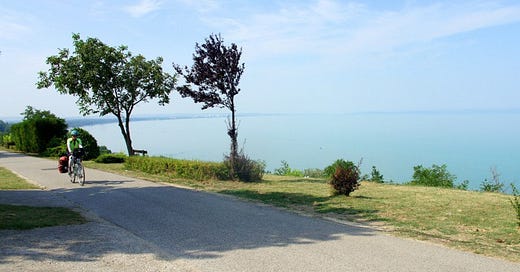
Cycle Touring in a Hungarian Heat Wave
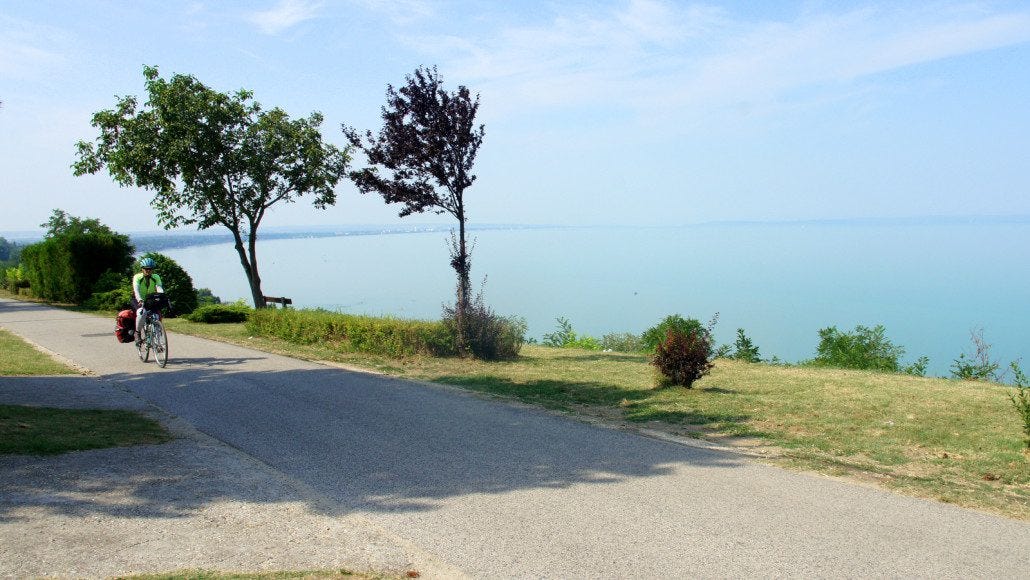
The situation was dire. “They don't have chocolate-covered rice cakes!” Chelsea reported, walking out of our favorite European grocery store, Spar. “And no ajvar either.” We were scarcely 100 pedal strokes over Hungary’s border and already were forced to continue sans our favorite snack and red pepper spread. Whatever - we hadn’t made it this far to only to crumble so easily.
The country’s history is a tough one. Smack-dab in the middle of Central Europe, Hungary was once a wealthy empire ranging from coastal Croatia east to the Black Sea. It was an industrialized nation and Budapest rang with discourse, music and art. Then the ramifications of two world wars carved up the illustrious empire and resulted in half of ethnic Hungarians living outside the new borders and 70% of its previous land holdings stripped away and handed over (or returned) to other countries. This split the beating heart of industry from the lifeblood of raw materials necessary to feed it, crushing the economy.
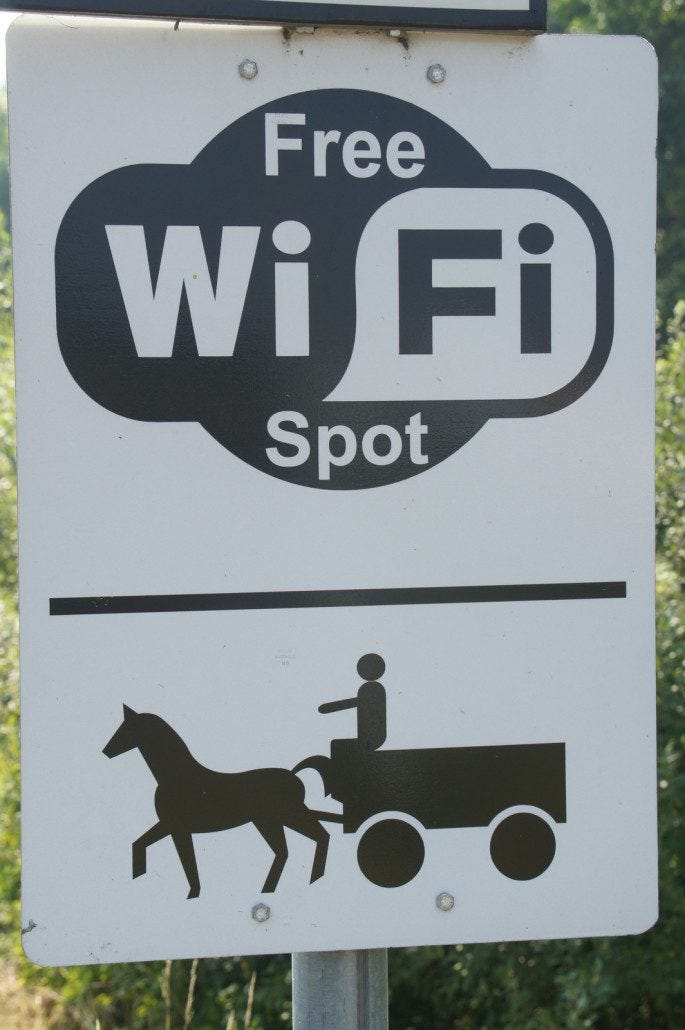
Sign of the times? Progress rooted in the old.
Though many Hungarian leaders pushed for neutrality during WWII, geography forced it to join the Axis powers. One book I read said, “they could either be broiled by the Germans or boiled by the Russians.” When Hungary tried to negotiate a surrender to the Allies, the German forces stomped in to occupy the country. Then the Russian troops invaded and pillaged. They also extracted onerous war reparations that undermined the Hungarian economy, weakened the previous government and paved the way for 50 years of Communism.
President Harry Truman, a die-hard Midwesterner, once told a Hungarian diplomat that he’d like to visit to learn about their agriculture system. He never made it before the Iron Curtain slammed shut, but if I had a few lines to report back my superficial findings based on my 10 days touring there, I’d say:
“Dear Prez Truman - fields of corn, wheat, rye and sugar beets cover the majority of the countryside. It feels like a Soviet-influenced version of Illinois. Uniform boxy homes cluster together in empty villages, the eerie silence broken occasionally by a tractor gnashing up the street. Elderly people creak by on bikes so rusty it’s a miracle the frames hold together. The cheery flowers in window boxes, so often seen in Western Europe, are gone.”
And then I'd tell Harry to watch the video I put together from our time in Hungary; it's at the bottom of this post.
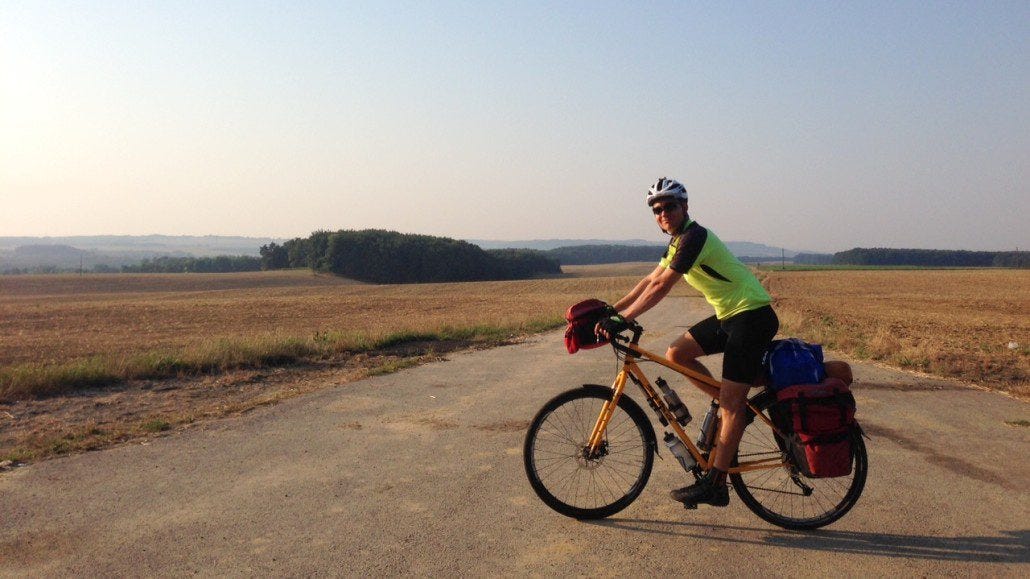
Frankly, cycling through Hungary felt more like survival than fun, and we had a hard time enjoying it. The agricultural terrain felt monotonous and the heat hung on our backs like a scorching blanket of coals. We struggled to connect with the place in our usual way, though everyone we interacted with was incredibly cordial and friendly. One memorable evening was a nice Warmshowers stay with a lovely family in the countryside. They told us of the difficulties of starting a business or homeschooling children in a country that is still shaking off old Communist conformity.
Rising in the dark to beat the heat, Chelsea and I were pedaling each day by the time sunrise tinged corn stalks with a crimson hue. One memorable bonus was the roadside stands with delectable, juicy watermelons from southern Hungary. I ate mounds of the delicious fruit every day, spooning it directly out of the rind until my belly swelled, round and taut as the melons themselves.
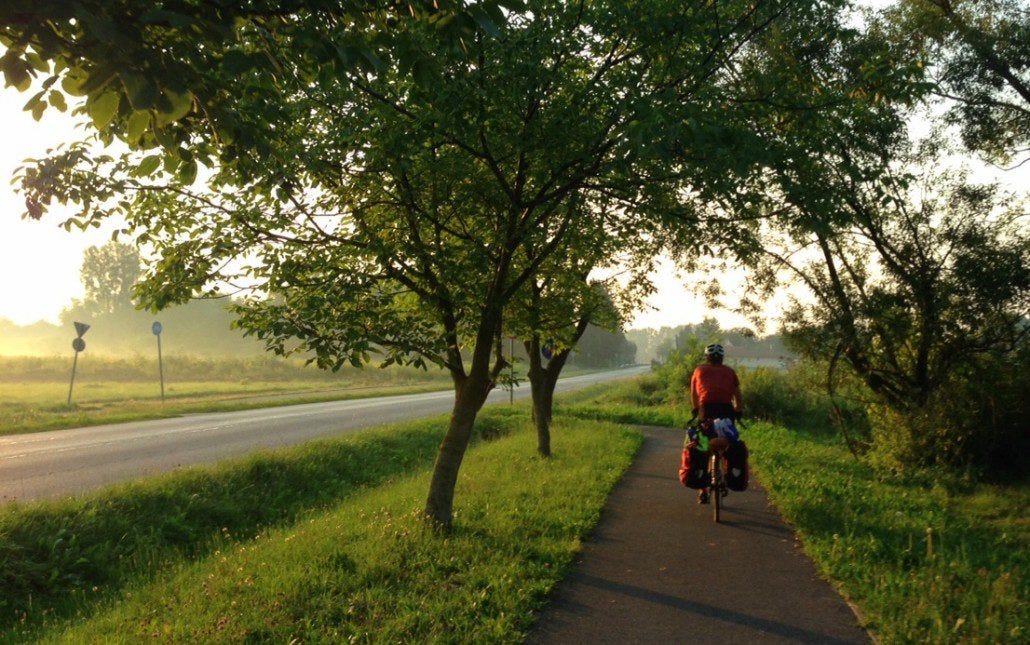
Sunrise start!
Our route was a 400-mile loop out of Slovenia. The destination: Lake Balaton, a blue oval in the midst of Central Europe’s Great Plains that attracts tourists from all over the area. We put the lake in our sights after reading about the excellent bike paths circumventing its shores. Parts of the lake are so shallow that it’s possible to wade out hundreds of feet and still only be up to your waist; people stand around chatting like they’re hanging out in a park.
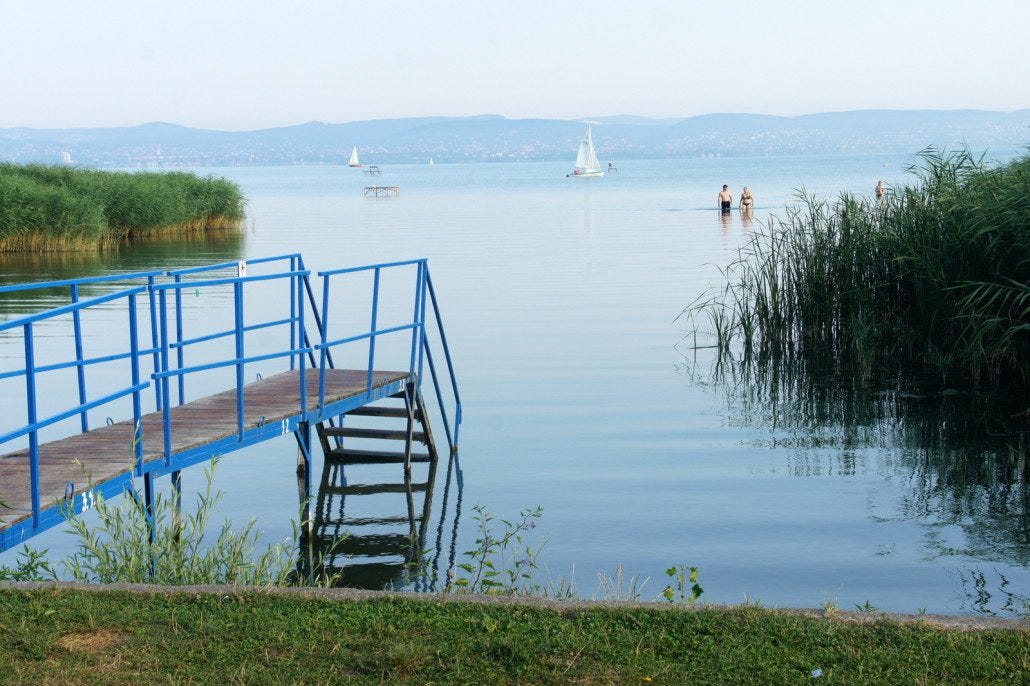
Balaton felt like two different worlds depending which side we pedaled. The flatter south shore featured rental houses and resorts that spawned hundreds of people and their inflatable beach equipment. Bike paths were often crowded with tourists (takes one to know one) who wandered about like bowling balls between bumpers.
The north was less developed, hillier, and more scenic, and we wound our way through grape vines as we gazed out over the crystalline blue lake from excellent vantage points. Our favorite stop was a rest day in the town of Balatongyörök, where we gulped delicious homemade strawberry lemonade on a restaurant terrace overlooking lake and enjoyed a couple hours of respite before retreating to the comfort of air conditioning. Unless squeaky beach toys and crowds are your idea of a fun bike tour, my recommendation would be to stick to the northern side of Lake Balaton.
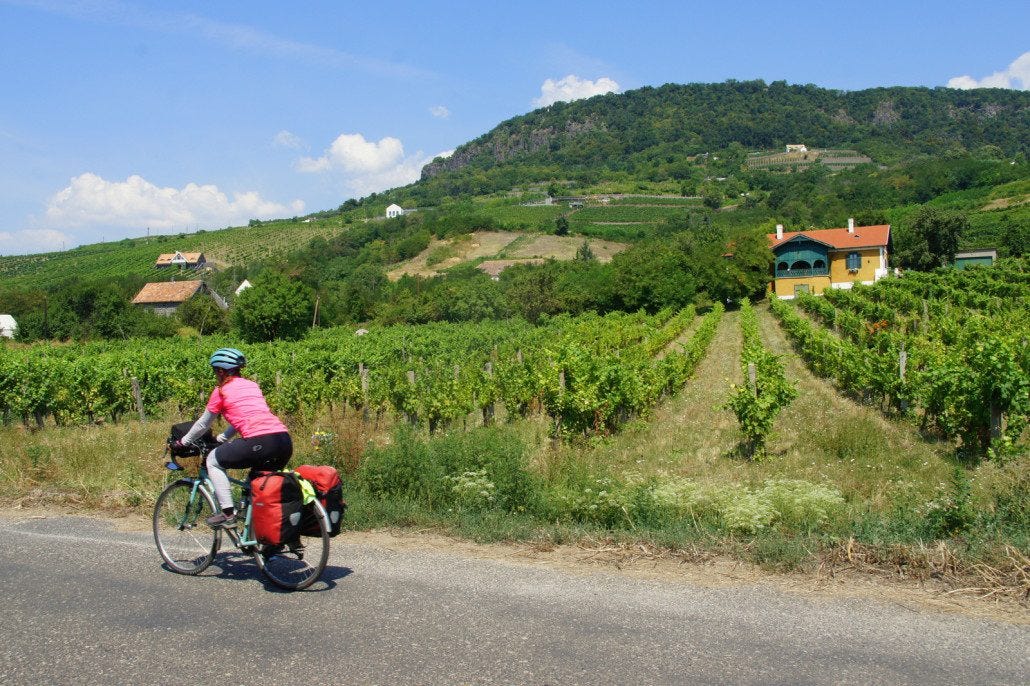
The silver lining to difficult days on the bike is that they make the rest of life easier in comparison. Cranking on pedals through blinding heat and boring scenery steels me to other tasks that might seem tough, but really aren’t too bad. Plus, hard days of cycling usually (but not always) beat a day in my old engineering office or dealing with a plumbing leak at home. At least that’s what I like to tell myself.
Our last day in Hungary was a good one, and years from now I’ll probably recall our entire trip there in a positive light. We were on the road by six a.m. and rode through winding country roads lined by corn. Tractors chugged past and we cruised with scarcely a break. Five hours and forty miles later, we’d crossed into Slovenia and were sitting by the pool at an odd Soviet-era pool complex. We then cooled off and ambled over to Spar to pick up some chocolate rice cakes. It’s the small things that keep us going some days.
Here's that little 2-minute video I put together for Mr. Truman documenting our experience in Hungary. Enjoy.
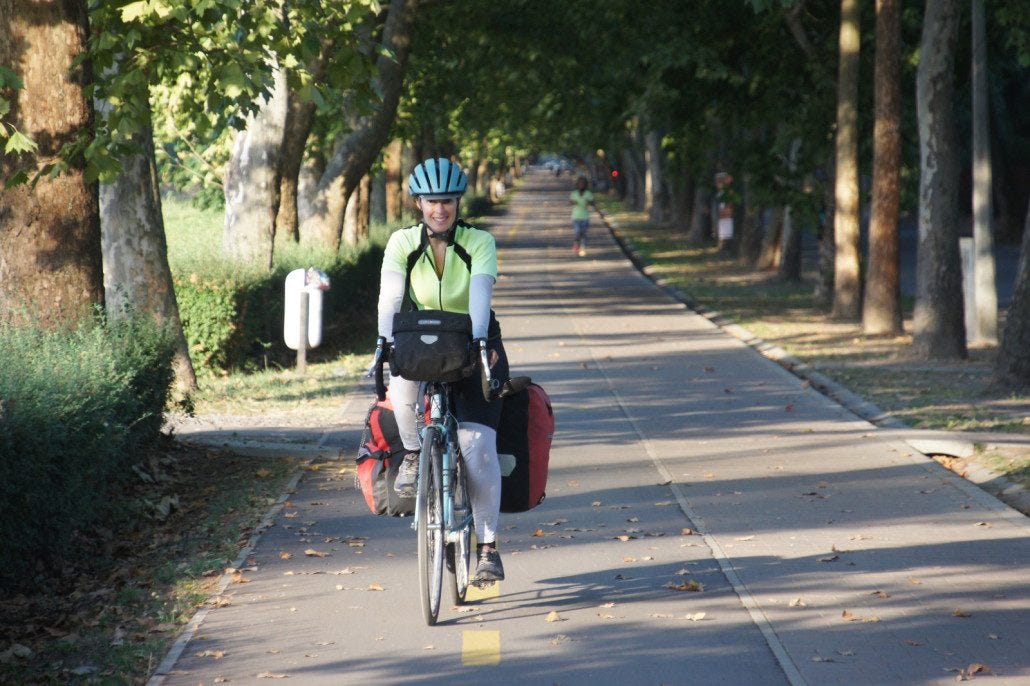
Chelsea rolls along a bike path on the south side of Balaton.

